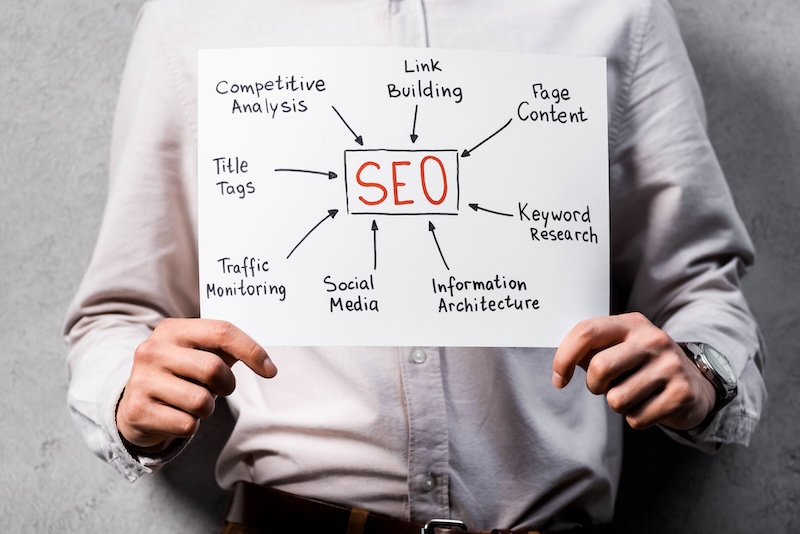Workplace environments can sometimes deal with subtle threats, particularly concerning issues such as sexual harassment. The forms of sexual harassment extend far beyond explicit actions, often encompassing more covert and nuanced behaviors that can create a toxic atmosphere for individuals.
While blatant instances of harassment may be more easily identifiable, the more discreet ones often go unnoticed, cultivating a culture of silence and discomfort. Hence, it’s crucial for everyone within a workplace to develop a heightened awareness of the various subtle cues that may signal the presence of sexual harassment. By understanding and actively addressing these signs, individuals can contribute to fostering a safer and more respectful professional environment for all, ensuring that workplaces become spaces where individuals can thrive without fear or compromise.
In this article, we shed light on the signs of sexual harassment at work, urging employees and employers alike to recognize and address these manifestations.
What is Sexual Harassment?
Sexual harassment is a form of unwelcome behavior or advances of a sexual nature that create a hostile, intimidating, or offensive working or social environment. It involves any unwanted verbal, non-verbal, or physical conduct of a sexual nature that interferes with an individual’s work performance, limits their career opportunities, or creates an uncomfortable or hostile atmosphere. Sexual harassment can occur in various settings, including the workplace, educational institutions, social gatherings, or online environments, and can happen between individuals of any gender.
It’s critical that both individuals and organizations are aware of the signs of sexual harassment, take preventive measures, and establish clear policies and procedures to address and remedy such behavior. Laws and regulations in many jurisdictions aim to protect individuals from sexual harassment, emphasizing the importance of promoting safe and respectful environments in all aspects of life.
Sexual Harassment vs Sexual Assault
Sexual harassment and sexual assault are distinct terms that encompass various forms of inappropriate sexual behavior, each carrying its own set of implications. Sexual harassment refers to unwelcome conduct of a sexual nature that creates a hostile, intimidating, or offensive environment. This can include behaviors such as unwanted comments, advances, or gestures that make individuals feel uncomfortable in professional, educational, or social settings. It may also involve a power dynamic where employment benefits or opportunities are conditioned on compliance with these unwarranted advances.
In contrast, sexual assault involves non-consensual sexual contact or activity and is a criminal offense. It includes actions such as rape, attempted rape, unwanted touching, or any form of sexual coercion without the explicit consent of all parties involved. This form of assault is a serious violation of personal boundaries, and survivors may experience profound physical, emotional, and psychological trauma. Legal consequences, including criminal charges, may follow such acts.
While both sexual harassment and sexual assault involve inappropriate sexual behavior, the key distinction lies in the nature of the conduct, with harassment typically manifesting as unwelcome behavior in a broader context, and assault involving direct violations of bodily autonomy with legal consequences. Both issues demand attention and preventive measures to create safer environments and protect individuals from harm.

Types of Sexual Harassment
To empower individuals and organizations to recognize, address, and prevent such misconduct, here are the common types of sexual harassment and their implications:
Quid Pro Quo Sexual Harassment
Quid pro quo sexual harassment occurs when an individual in a position of power, typically a supervisor or someone with authority, makes unwelcome sexual advances or requests for sexual favors as a condition for employment benefits, promotions, job security, or other favorable treatment. This type of harassment involves a direct exchange where compliance with the unwarranted advances is linked to professional opportunities or consequences.
Quid pro quo harassment can create a coercive and exploitative environment, leaving the victim feeling pressured and compromised in their workplace.
Hostile Work Environment
This refers to an atmosphere permeated by unwelcome sexual conduct or behavior that interferes with an individual’s ability to work comfortably. This type of harassment isn’t tied to specific job benefits. Instead, it creates an intimidating, offensive, or hostile workplace environment due to pervasive and inappropriate sexual behavior. Such conduct may include unwelcome comments, jokes, gestures, or visual materials that make the work atmosphere uncomfortable or intimidating.
A hostile work environment can severely affect an individual’s well-being, job performance, and overall job satisfaction, contributing to a toxic work environment.
The Negative Effects of Sexual Harassment in the Workplace
Sexual harassment in the workplace can have complex and long-term effects on both individuals and the overall organizational climate. These negative consequences impact not only the immediate victims but also the broader work environment, creating a toxic atmosphere that can hinder productivity, morale, and professional relationships.
Before knowing the top signs of sexual harassment in the workplace, it’s important to understand its most common effects:
Emotional and Psychological Impact
One of the most profound effects of workplace sexual harassment is the emotional and psychological toll on the individuals who experience it. Victims may endure feelings of humiliation, anxiety, depression, and even a loss of self-esteem. The persistent stress resulting from such experiences can lead to increased absenteeism, reduced job satisfaction, and even long-term mental health issues.
Erosion of Trust and Morale
When employees witness or become aware of such behavior, it can diminish their confidence in the organization’s commitment to providing a safe and respectful environment. This decreased level of trust can have a detrimental effect on team morale, collaboration, and overall job satisfaction.
Professional Consequences
Career advancement may also be stunted as individuals may fear retaliation for reporting the misconduct. Furthermore, the hostile work environment created by harassment may lead to decreased job performance, hindering professional growth and success.
Increased Turnover and Recruitment Challenges
A workplace tainted by sexual harassment often experiences higher turnover rates as employees seek more supportive and secure environments. This turnover can result in increased recruitment costs, disruptions in workflow, and loss of valuable talent, ultimately impacting the organization’s stability and success.
Legal and Reputational Risks
Organizations that fail to address and prevent sexual harassment may face legal consequences, including lawsuits and regulatory penalties. Moreover, a reputation tarnished by a culture of harassment can harm an organization’s brand, making it less attractive to prospective employees, clients, and partners.

Signs of Sexual Harassment at Work
While harassment can take various forms, recognizing common signs can empower individuals and organizations to address and prevent such misconduct. The following are key indicators that may signal the presence of sexual harassment:
- Unwanted Advances or Comments – Individuals may experience unwelcome sexual advances, comments, or gestures, ranging from inappropriate jokes to explicit comments about appearance or behavior, which can create discomfort and a sense of intrusion into personal boundaries.
- Coercion or Pressure for Sexual Favors – Quid pro quo harassment involves the explicit or implicit expectation of sexual favors in exchange for workplace benefits, promotions, or protection against adverse actions. This can create a coercive environment where compliance is linked to professional opportunities.
- Offensive Display of Materials – The display or circulation of sexually explicit materials, such as images, videos, or written content, within the workplace can contribute to a hostile environment, making individuals feel uncomfortable and harassed.
- Inappropriate Touching or Physical Contact – Unwanted physical contact, touching, or brushing against another person without their consent is a clear sign of harassment. These inappropriate behaviors make individuals feel uneasy or violated.
- Retaliation for Resisting Advances – Individuals who resist or report harassment may face retaliation, such as negative changes in job assignments, unwarranted criticism, or exclusion from professional opportunities.
- Exclusion or Isolation – Those who experience harassment may be intentionally left out of professional activities, meetings, or social events, impacting their sense of belonging and professional engagement.
- Persistent and Unwanted Communication – Receiving unwanted and persistent communication of a sexual nature, such as emails, messages, or explicit content, can contribute to a hostile environment.
Handling Sexual Harassment in the Workplace
It’s crucial for organizations to have clear policies and procedures in place to address and prevent workplace sexual harassment. They can take these steps to effectively handle and address the signs of sexual harassment in the workplace:
- Develop a clear and comprehensive sexual harassment policy that outlines unacceptable behavior, provides examples, and explains the consequences for violations. Ensure that the policy is communicated to all employees, and that they understand their rights and responsibilities.
- Encourage open communication and educate employees about what constitutes sexual harassment, emphasizing the importance of treating everyone with dignity and professionalism.
- Conduct regular training sessions to educate employees about sexual harassment, its impact, ways to prevent it, non-retaliation policies, and the role of bystanders in preventing harassment.
- Ensure that there are accessible and confidential channels for sexual harassment incident reporting so that employees feel comfortable raising their concerns.
- Investigate all complaints of sexual harassment promptly and thoroughly and respect the confidentiality of those involved to the extent possible.
- Take appropriate disciplinary actions against individuals found responsible for sexual harassment.
- Offer support services for victims, including counseling and resources to help them cope with the emotional and professional impact of harassment.
- Provide information about external resources, such as hotlines, counseling services, or legal support, to employees who may need additional assistance outside the organization.
- Periodically review and update the sexual harassment policy to ensure its effectiveness and relevance.

Work with a Company That Values Employee Welfare
Recognizing and addressing signs of sexual harassment at work is essential for fostering a healthy and inclusive professional environment. By understanding the various manifestations of this misconduct, employees and employers alike can contribute to the creation of a workplace that values respect, dignity, and fairness. If you’re on the search for somewhere you’ll grow and have a safe time building your career, FilWeb Asia, Inc. offers exciting career opportunities for individuals like you who seek to be part of a dynamic and respectful work community.
At FilWeb Asia, Inc., the commitment to a healthy workplace is a core value that permeates the company’s backbone. We prioritize the welfare of our employees by actively promoting a positive workplace culture that condemns any form of harassment. The company also believes in providing a safe and supportive environment, where employees can grow both personally and professionally. Join us today.










